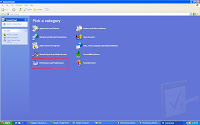Boost-up your pc speed by increasing virtual memory
First of all make ourselves aware of virtual memory??
virtual memory:-Virtual Memory is freespace on your hard-drive which your computer uses as a backup in order to deal with data overflow, when ur system is running low(low speed) on RAM or when RAM memory is not enough to run a particular task .Virtual memory, also known as a page file or swap file, is a file on your harddrive (C:\pagefile.sys by default) that Windows and applications use in addition to physical memory (RAM) when needed.
which means the some part of the secondarymemory(hard-drive) is used as primary memory for serving the program execution purpose when RAM is not sufficient.This free-space used is called virtual memory.
General idea of how it works:- Virtual Memory on ur PC is like having a reserved-fuel tank on ur truck. When u are running at full throttle and ur pc's RAM is all used up, ur PC starts throwing inactive program applications into the emptyspace of your hard-drive(virtual menory), restoring them to the RAM when that program need occurs. Virtual memory is way to trick programs as there is still enough memory-space to go around and keeps the programs running, while in reality you computer is merely doing a complicated juggling act, shifting used and unused data between its actual RAM and its Page-File.
How to increase virtual memory:- Increasing the speed of ur virtualmemory is easy and requires no software downloads.Follow the below procedure
1)First go to ur Control Panel
2)then go to the Performance and Maintenance Tab (switch to Category view)
3) click on the System Icon.
4)When the System Properties window opens, go to Advanced Tab, then click on Settings button in the "Performance" section which will open a Performance Options window. Then click on Advanced Tab Move down to the “virtual memory” section and click on the Change.
5)Keep the initial size same as recommended and maximum size the double of it then restart your system.
It will improve speed of windows and you can play some games which require higher RAM. Other method to go to virtual memory changings:-
Other method to go to virtual memory changings:-
1)To set the virtual memory page file, first Right Click the My Computer icon
2)Select PROPERTIES. This opens the System Properties box. Select the Advanced Tab and then click the Settings button in "performance" section.
3)Click on the Advanced tab. Go to the "Virtual Memory" section and click Change. This opens the Virtual Memory window.
The general rule is to make the amount of virtual memory available about one and a half times bigger than the amount of RAM you are using. So, for instance, if you have 1000 MBs of RAM, make your Virtual Memory size 1500 MBs. Another good trick to know is to make minimum and maximum paging file size the same value(ie to keep both at max values) . This will keep your PC from constantly changing your Page file Size and keep its performance more stable.
RAM & virtual memory are two different things. Virtual memory allows you to use a portion of your hard drive.Your hard drive is up to 100 times slower than RAM, so virtual memory is much slower than RAM.When you upgrade your RAM, you can reduce or eliminate the use of virtual memory. Upgrading RAM makes memory available to complete tasks previously handled by virtual memory.If u have lowspeed RAM, go to http://www.crucial.com and have it scan your system. It will tell you how much RAM you have and if you can upgrade.![]()
STARTING
-
*i don't know how to start these type of blogs but let me start like
this"When the Going Gets Tough, the Tough Get Going" which means when
situatio...
16 years ago










1 comment:
The description of virtual memory above is NOT accurate. Virtual memory is not the pagefile and it is not an extension of physical RAM. It is always in use and cannot be disabled.
Virtual memory is a system that provides a consistent environemnt to applications that is independent of the size of RAM. Every application sees a virtual address space of 4GB. The lower 2GB is private (not shared) to each process while the upper 2GB is used by the system. Physical RAM is mapped into this address space according to both need and availability.
NOTE: this is virtual address space and is completely independent of RAM size.
Physical memory acts as a cache of the hard disk. RAM is used to hold frequently used data while the disk holds the remainder. The pagefile is as temporary storage for infrequently used modified data. Application code is not normally written to the pagefile as it can simply be reloaded from the original files.
Best advice regarding the pagefile: Unless you have a very specific need, leave it on system managed. The large majority of computer users will be well served by this setting. Many VERY experienced users use this setting.
Windows designers understand memory management and the pagefile better than you do.
Larry Miller
Microsoft MCSA
Post a Comment